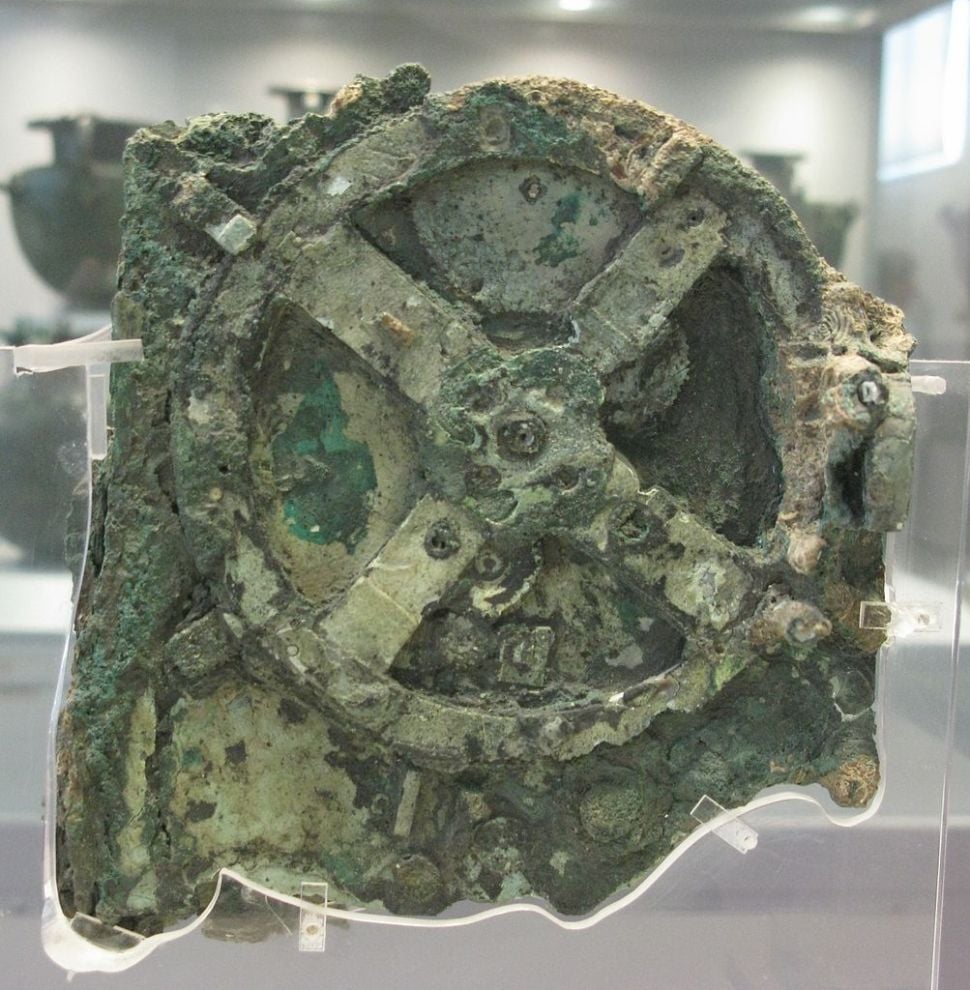
Scientists are one step closer to unlocking the secrets of the 2,000-year-old Antikythera Mechanism, considered the world’s first computer, thanks to a new computer-generated reconstruction of the ancient device.
Researchers from the University College London have unveiled their computational model in the journal Scientific Reports, and are currently in the midst of building a physical replica.
Discovered in 1901 off the coast of the Greek island of Antikythera, the mechanism was actually an astrological clock that would have shown the movement of the five known planets and predicted astronomical events such as the phases of the moon and lunar and solar eclipses—but with the earth placed at the center of the universe.
Because only a third of the device has survived, in 82 heavily corroded fragments, no one has ever been able definitively determine how it worked. Based on years of research, however, the University College London team claims to have figured out how the interlocking gears would have been arranged to allow for the correct movements, all while fitting inside a wooden case the size of a shoe box.
A computer generated rendering of the Antikythera mechanism. Image courtesy of the University College London.
“The distance between this device’s complexity and others made at the same time is infinite,” Adam Wojcik, a materials scientist at the college who co-authored the study, told Live Science. “Frankly, there is nothing like it that has ever been found. It’s out of this world.”
The new model is based in part on research by Michael Wright, who took detailed X-rays and eventually built a replica of the device while working as curator of mechanical engineering at the Science Museum in London in 2002.
A computer generated rendering of the Antikythera mechanism. Image courtesy of the University College London.
The University College London team also looked to 3-D X-rays and surface imaging carried out by the Antikythera Mechanism Research Project in 2005 that revealed inscriptions on the device that described its display of the cosmos. (It is believed that the mechanism originally had 37 gears, 30 of which have survived.)
“Ours is the first model that conforms to all the physical evidence and matches the descriptions in the scientific inscriptions engraved on the mechanism itself,” Tony Freeth, the paper’s lead author, said in a statement.
Computer model of the cosmos display on the front of the Antikythera mechanism, showing positions of the Sun, Moon, and five planets, as well as the phase of the Moon and its nodes. Image courtesy of the University College London.
Whether or not the ancient Greeks had the proper technology to create the carefully shaped parts in the new model remains an open question, however.
The concentric rings would have rotated on nested hollowed axels, and it’s unclear how these could have been fabricated without a modern-day lathe to shape the metal.
Computer model of the cosmos display on the front of the Antikythera mechanism, showing positions of the Sun, Moon, and five planets, as well as the phase of the Moon and its nodes. Image courtesy of the University College London.
“The concentric tubes at the core of the planetarium are where my faith in Greek tech falters, and where the model might also falter,” Wojcik admitted to the Guardian. “Lathes would be the way today, but we can’t assume they had those for metal.”